Circular EconomyRecyclingSustainabilityThe 7R's of Sustainability
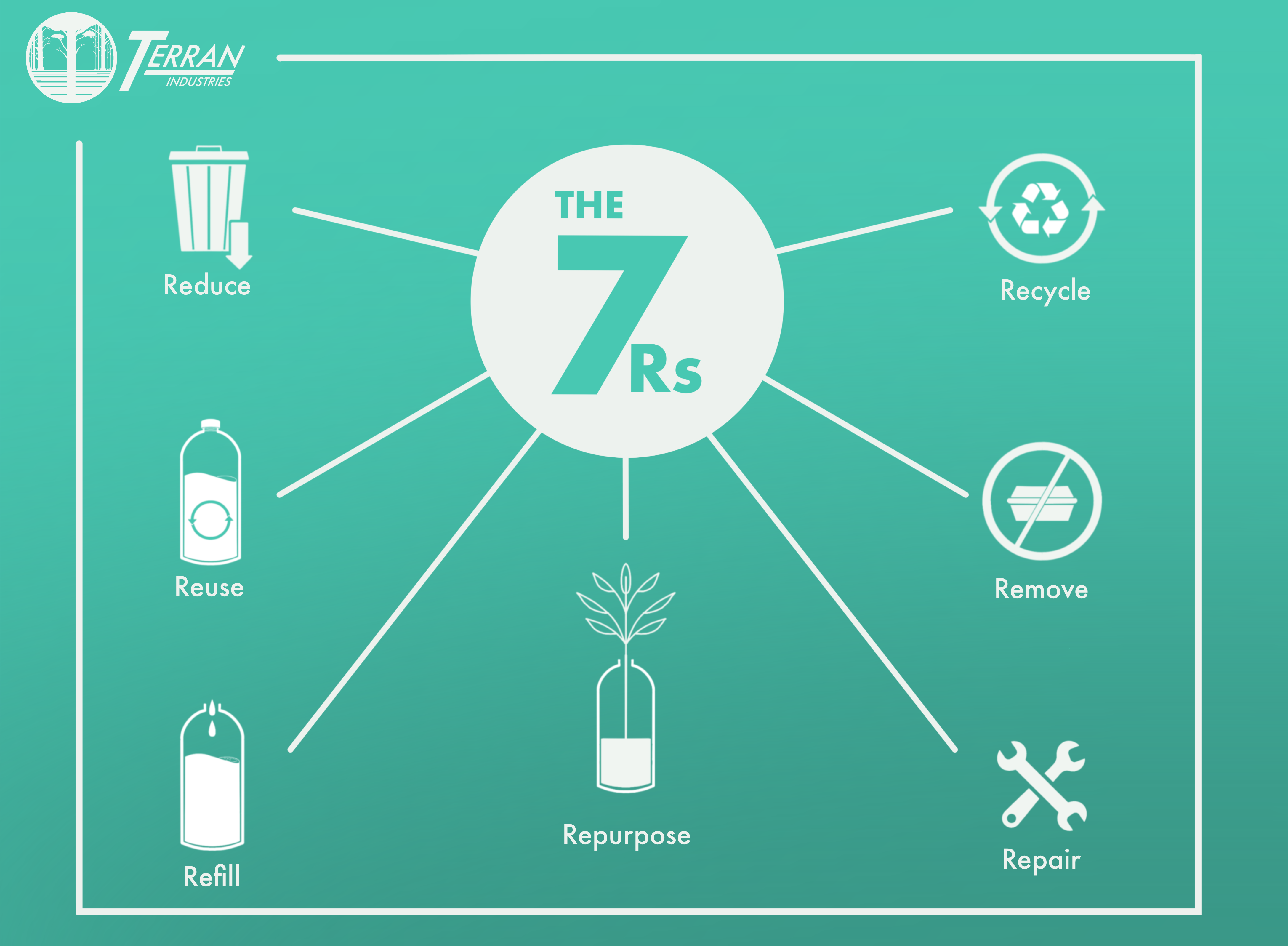
If we’re going to save the planet, we need a multifaceted approach. There are many separate issues that contribute to climate change, and each one of us is in a unique position to make our own impact. The 3 Rs of sustainability – reduce, reuse and recycle – are well known. They provide a useful starting point for thinking about how we can all take action to protect the environment. However, they are just that – a starting point. There are in fact many more ways that you can change your habits to be kinder to the planet. We’ve come up with 7 Rs that we see as fundamental to affecting change in your own life and business. The overarching principles that underpin these 7 Rs are also helpful to consider when trying to be more sustainable.
What are the underlying themes of the 7 Rs?
The 7 Rs aren’t just about individual actions – they’re about pushing changes in attitude and habits across society in general. Having an awareness of the primary concepts can help guide our actions and help us live by the 7 Rs.
1. Creating value through repetition
It’s no coincidence that all of the 7 Rs start with the prefix “re-”. “Re” means “again”, “once more” or “repeatedly”. All of the 7 Rs encourage us to take a second look at an item and recognise its value. For businesses in particular, using the resources you already have can be beneficial from a financial and an environmental perspective. If we look to the first R, “reduce”, even this word has its origin in the idea of paring something back that has expanded beyond what it once was. The 7 Rs are about looking at things as they are now and thinking how we can do better – learning from what we’ve done before.
2. Returning to old ways of doing things
It might have struck you that many of the concepts of sustainability, such as reusable containers and refillables, involve returning to the way things were done years ago. While the modern world offers us high levels of convenience, this is often at the expense of the planet. At this crucial time for acting on climate change, we need to consider which modern solutions to keep and which we should lay to rest in order to live more sustainable lives.
3. Circularity
The circular economy is a model for society that seeks to produce as little waste as possible by designing products and services that will produce little to no waste. Businesses using a circular model employ many of the 7 Rs within their business models.
4. Harmony with nature
It might seem obvious when talking about sustainability, but we should all be acting in a way that protects and honours nature. If we’re always thinking about our product’s life ending in nature, we’re more likely to choose products that won’t cause damage when they’re thrown away and keep things out of the natural world as much as possible.
What are the 7 Rs?
As we gain a greater understanding of the climate crisis and it takes on more urgency, the 7 Rs are a useful framework to guide our sustainability actions.

1. Reduce
“Reduce” could be seen as the most important R because all 7 Rs seek to reduce the amount of waste that we’re putting into the natural environment. As such, “reduce” can be seen as a guiding principle for all our climate action. In concrete terms though, it’s not just about reducing waste. We should also reduce the things we buy and use in the first place. Not only will this reduce the amount of waste we create by default, but it also reduces carbon emissions. Every product we buy has been manufactured, packaged and transported. All these processes use up resources and give off greenhouse gas emissions. If we all shift to a mindset of only buying what we really need, we can start living in better harmony with our planet.
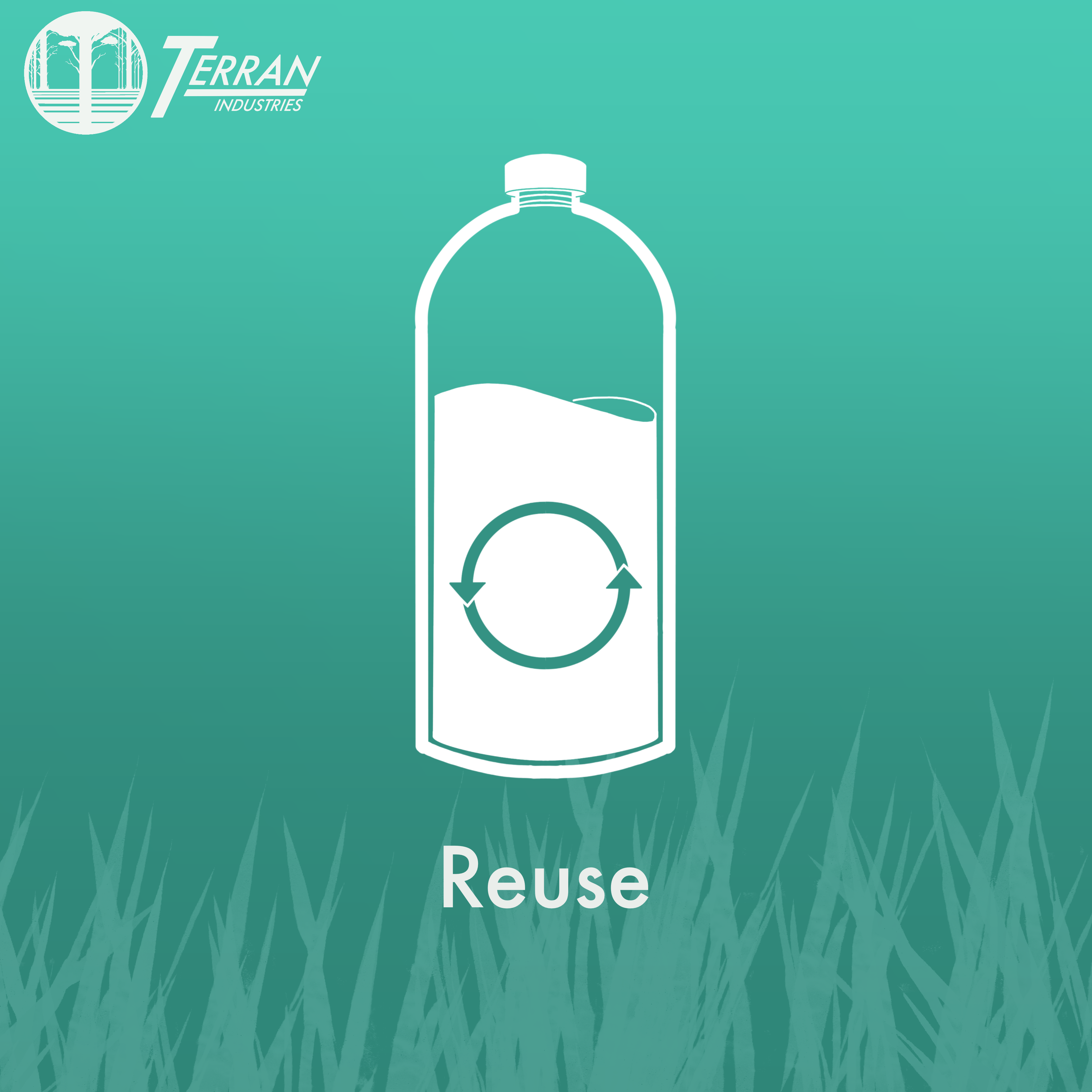
2. Reuse
Reusing items not only helps to reduce unnecessary waste but also helps us to value products and materials and release their full potential. “Reuse” asks us to question behaviours that are often unconscious, for example throwing away takeaway containers. Instead, we should consider whether we can reuse them – in this example, the containers could be kept and used for food storage. We can also buy products that we know can be reused again and again, instead of disposable ones – for example, a reusable coffee cup or water bottle. Businesses have even more opportunities to make an impact, by offering reusable items to customers and employees instead of disposable ones.

3. Refill
“Refill” is the natural follow-on from “reuse” – after all, reusable containers need to be refilled. The refill movement is gaining momentum, with lots of dedicated refill shops popping up. At these stores groceries are available in bulk, and you bring your own refillable containers for them, paying by weight. There are now also companies who are creating and offering refill products that you can order online. For example, Zero Co provide household cleaning products in refillable pouches that you can send back free of charge to be refilled.
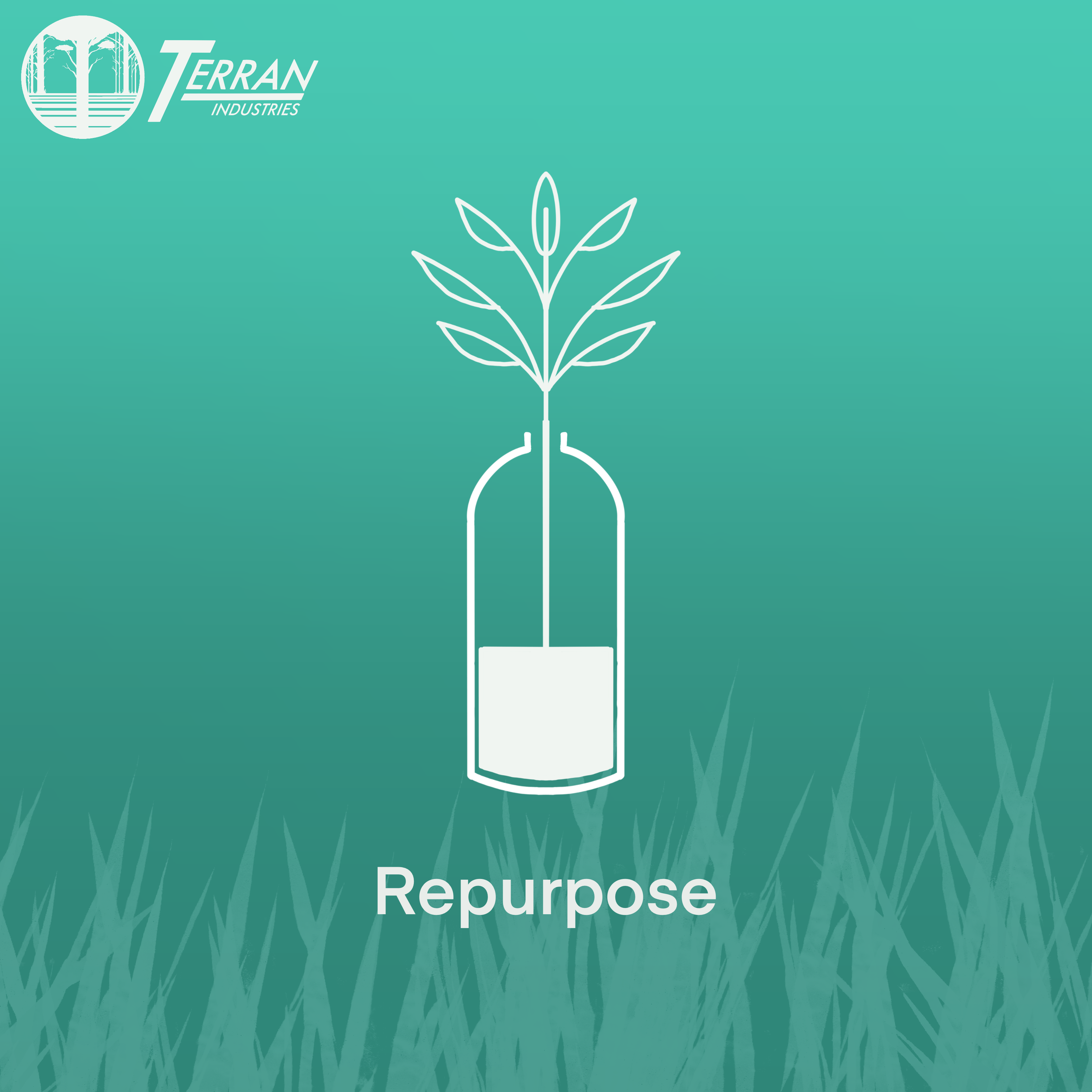
4. Repurpose
The use of repurposed materials has become trendy in interior design, but they’re better for the planet too. Repurposing is similar to reusing, but instead of continuing to use the item for its original purpose, it’s given a new function. This might involve adapting it somewhat but not breaking it down completely like recycling. Think using old school desks as kitchen countertops or turning discarded steel beams into furniture. On an individual basis, we can repurpose items in the home too. Old food cans could be made into flowerpots, or old clothes could be used as cleaning cloths. It’s all about rethinking our waste and being creative.
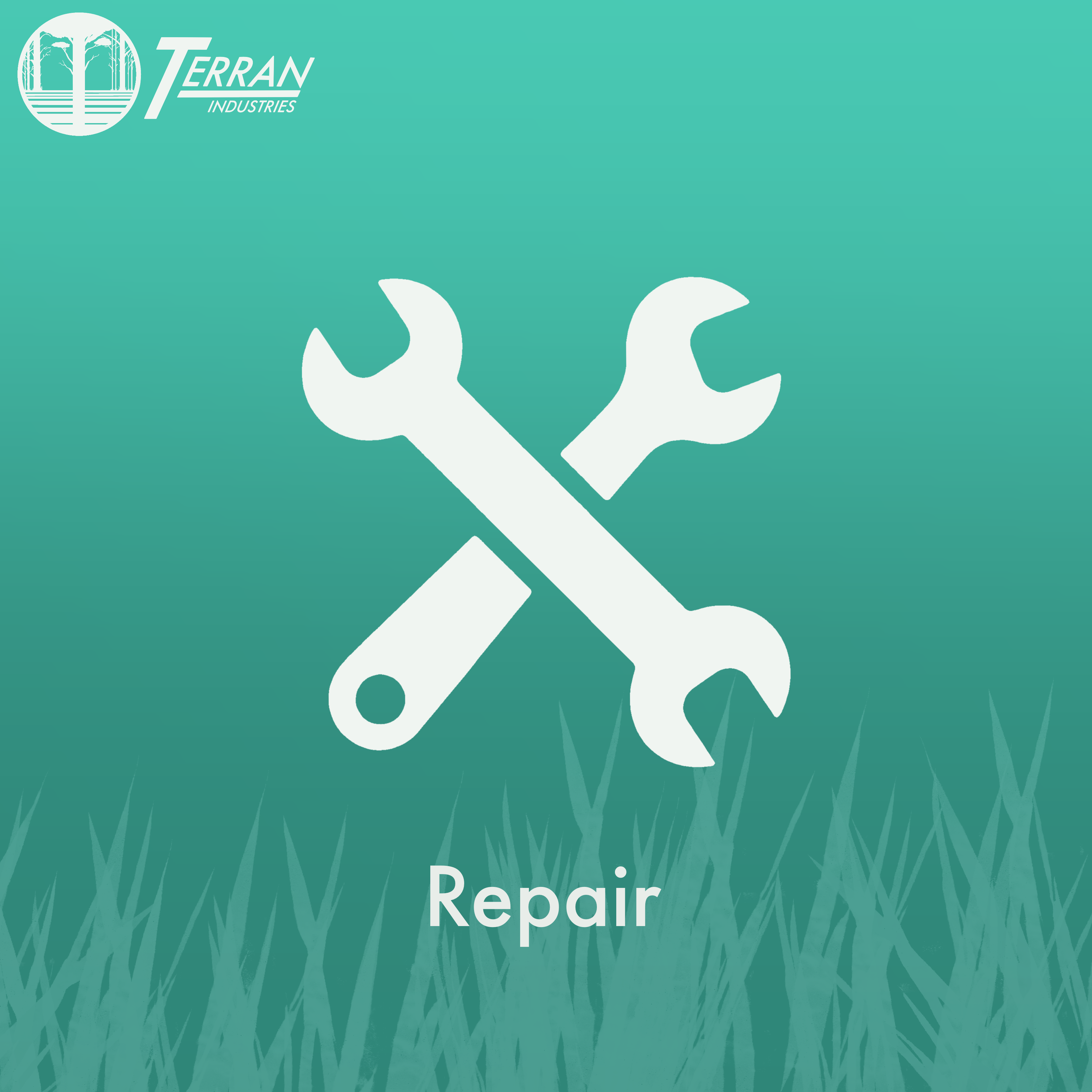
5. Repair
“Repair” is an important piece of the sustainability puzzle. In today’s throwaway culture, it’s all too common to get rid of items that could easily be repaired. We live in a society where everything’s treated as expendable, and material items aren’t valued as they once were. Fostering a culture of repairing things instead of throwing them away could vastly reduce the amount of waste that we collectively produce. Many businesses are starting to offer repair services for their products to help extend their lives. For example, clothing store Patagonia carry out repairs of their clothes, as well as offering plenty of advice on clothing care to help them last longer.
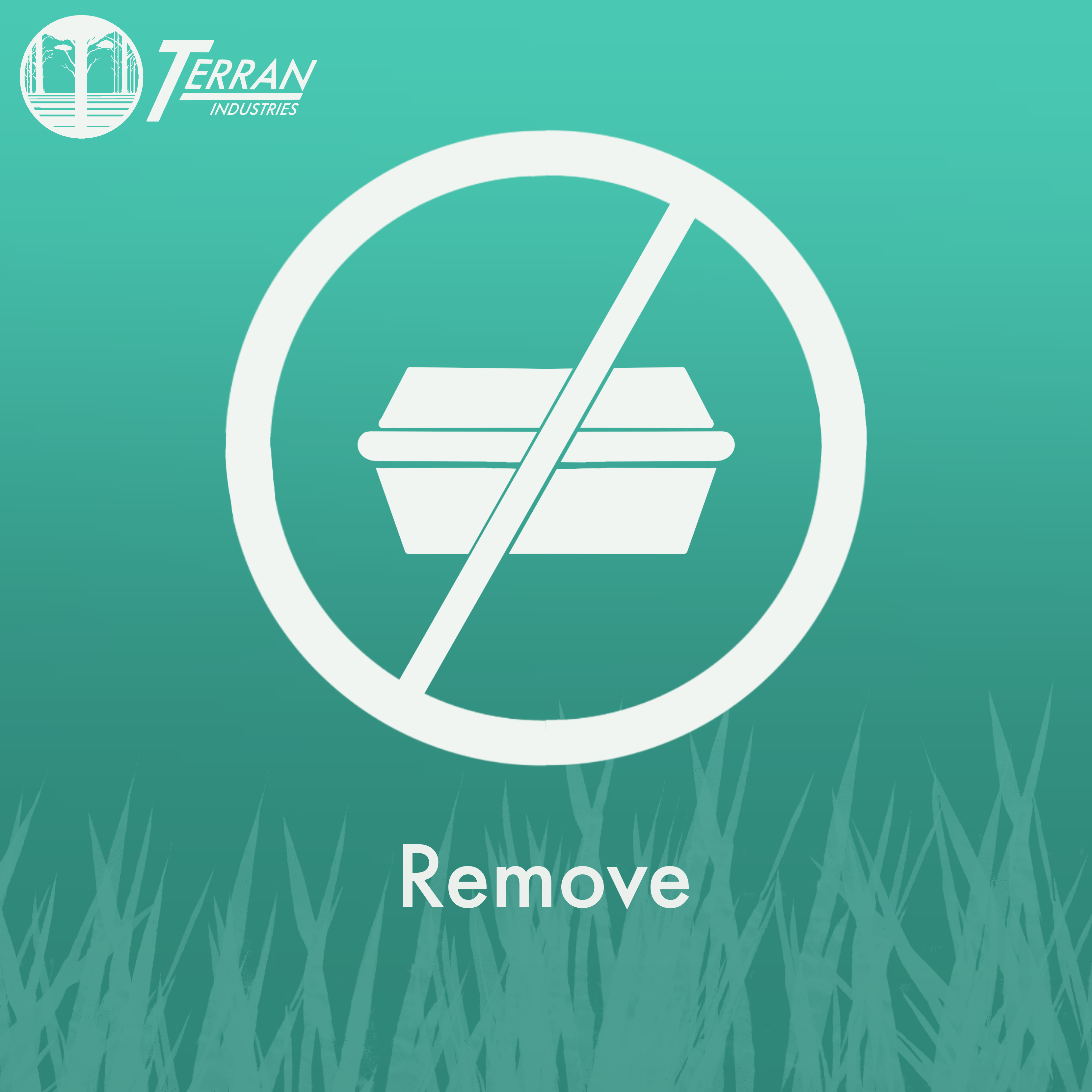
6. Remove
“Remove” homes in on the concept of reducing and specifically looks at where you could remove potential waste at the start of the process. This might be eliminating unnecessary packaging or designing products that will produce as little waste as possible at the end of their lives. Businesses looking to remove waste could review whether the products they produce or procure come in unnecessary packaging. And we can all use our voices to convince other companies to remove their packaging. For example, if you see that your local supermarket is selling fruit and veg plastic bags or film, you could write to them or start a petition to have it removed.

7. Recycle
The final “R” is perhaps the most well known. Recycling is often touted as an eco-friendly solution, and while it is better than waste going to landfill, it should be a last resort. Often, it’s only possible to recycle a certain percentage of the original product, so some of it still gets wasted. A lot of products end up being contaminated in the recycling bin so can’t be recycled anyway, and many materials can only be recycled a finite number of times. That’s not to say we shouldn’t recycle, just that it’s only one piece of the puzzle. We should reduce the number of new items we produce and throw out in the first place.
Creating ripple effects with the 7 Rs
Many of the 7 Rs might seem quite small when we think about them in relation to one item. However, the more of us who follow them, the more others will learn about them and be inspired to do the same. On her podcast How to Save a Planet, Dr Ayana Elizabeth Johnson argues that while individual actions may not make a huge impact on carbon emissions, if we view them as a tool for communicating and encouraging others, their influence can be huge.
Businesses can make an even bigger impact with the 7 Rs. Whether it’s switching suppliers, reducing waste or using repurposed materials, anything they do has a wider-reaching effect than individual action. Add to that the ripples you could make from teaching others about the 7 Rs and encouraging your customers to take action and change their habits, the possibilities of the 7Rs for business are infinite.

Rachel Baker
Writer
Rachel is a writer who specialises sustainability and ethical business, creating articles, blog posts and copy to inform and inspire.
